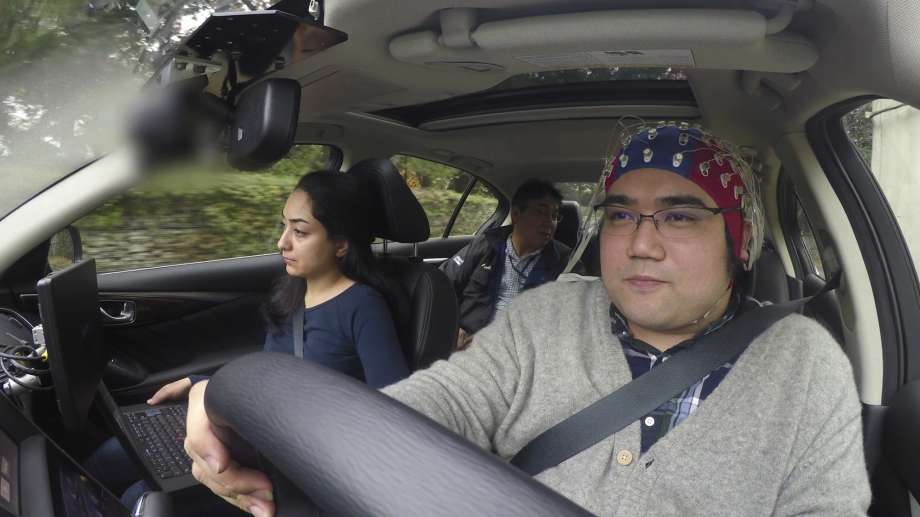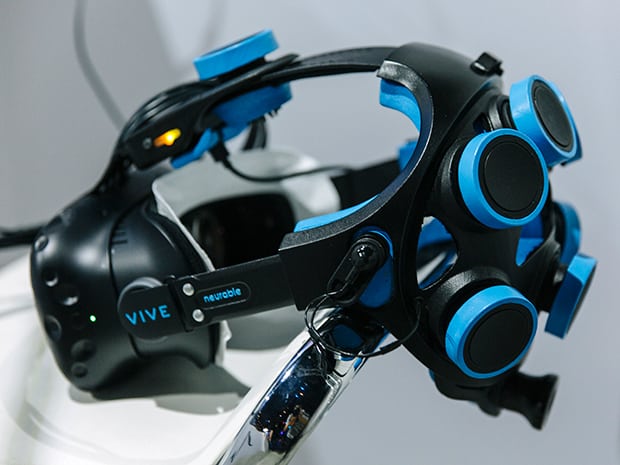Think about the ultimate VR and AR interface for a moment. It needs to be more than your VR hand controller – even though they have improved remarkably over the past two years. It needs to be more than tapping and swiping on the frames of your future AR glasses.
The new Vuzix Blade AR glasses are well-designed and they even incorporate a breakthrough integration with Alexa. But voice control is only as good as your wifi connection. While we may tolerate latency between word and action in the latest tech gadget, we want our everyday tech to instantly respond.
The only way to ultimately pull this off is through a VR and AR interface based on brainwave readings. And while we swoon over the latest hardware advances, brainwave interface research continues to move forward.
Microsoft’s VR and AR interface patent
The latest development in how we will interact with our virtual and augmented reality devices comes from Microsoft.
Microsoft has applied to patent a mind-controlled interface, so you may soon be able to open and control an app just by thinking about it.
The patent called ‘Changing an application state using neurological data’ was published last week and describes a device that can read human brain waves via electroencephalography (EEG), a technique often used in a clinical setting that involves placing electrodes along a user’s head. The data collected would then be used to launch and control an application.
It noted the tech could be used in 3D modelling software, word processors, video games, virtual reality and augmented reality simulators and much more. The same team also recently filed a related patent for a motion controller powered by the brain, too.
 Of course, Microsoft is not only one working in this area. Facebook and other companies are researching ways to use brainwave interfaces as our virtual reality devices shrink in size.
Of course, Microsoft is not only one working in this area. Facebook and other companies are researching ways to use brainwave interfaces as our virtual reality devices shrink in size.
And it’s happening in other fields, Nissan demoed a brain-to-vehicle interface at CES 2018 that would connect our brain activity to our cars (we know what you’re thinking – it’s actually to improve safety).
There are major challenges here – ranging from the bulky size of the current brainwave reading hardware to our hairstyles. Those Sci-Fi movies where everyone walks around with closely-cropped hair may have more truth than we realize.
If all this seems far in the future, there are some current virtual reality brainwave projects to keep an eye on.
Brainwave interfaces from Mindmaze and Neurable
Mindmaze is a Swiss-based neurotechnology company that’s been working on VR and AR interface projects for the past six years. In the early years, the company was focusing on medical research. But once you begin to see progress in stroke victims, it’s an easy leap to broaden your research to everyday applications.
Boston-based startup Neurable has been focusing on recording brain activity via electroencephalography (EEG) for virtual reality games and other activities. CEO Ramses Alcaide began working on the project as a graduate student at the University of Michigan.
The results of that research are seen in Neurable’s head strap which attaches to an HTC Vive VR headset. While you’re not going to be doing complex activities at this point, Neurable has already demonstrated a mind-controlled interface for simple games.

Even in their most basic form, these projects are years away from the consumer market. Early applications will be in medical care and environments with constrained activities – such as sitting in a car. And just as with virtual reality, the gaming community will be an early adopter.
Future Challenges
As our VR and AR interfaces move from controllers, swiping, and voice activation to brain activity, it will open the doorway to a new set of challenges. Tech-social challenges that seem straight out of a SiFi novel.
Hacking in the future will no longer mean stealing data from a device, but tapping into your brain activity. And personal space will not be framed in terms of physical distance or your privacy settings on social media, but in access to your thoughts.
All of this is a compelling argument for why we need to radically transform our educational systems. Today it’s just obscure research and a new Microsoft patent. In a few decades, it will be the next generation’s reality.
Emory Craig is a writer, speaker, and consultant specializing in virtual reality (VR) and artificial intelligence (AI) with a rich background in art, new media, and higher education. A sought-after speaker at international conferences, he shares his unique insights on innovation and collaborates with universities, nonprofits, businesses, and international organizations to develop transformative initiatives in XR, AI, and digital ethics. Passionate about harnessing the potential of cutting-edge technologies, he explores the ethical ramifications of blending the real with the virtual, sparking meaningful conversations about the future of human experience in an increasingly interconnected world.

